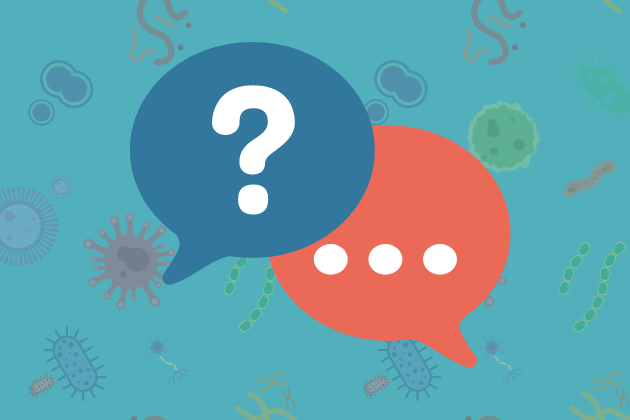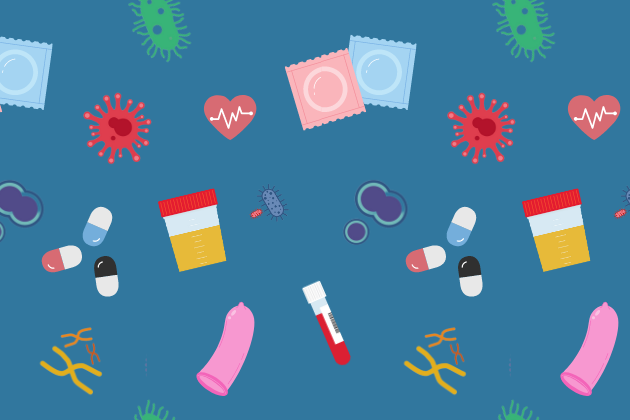
Getting tested at least once a year is a great way to take care of your health. However, beyond yearly routine testing, there are other times when it is a good idea to get an STI test. Here’s a quick checklist!
You may want to get tested:
- Before you have a new sexual partner. If you or your partner(s) have new partners frequently, you may want to get tested on a regular schedule every 3-6 months.
- If you have noticed any bumps, discharge, rashes, or other changes in your body.
- If you or your partner(s) have sex with other people.
- If you had sex with someone who has an STI that might be able to be passed and didn’t use a condom or other prevention methods, or your prevention method failed (like a condom broke or slipped off).
- If you had sex with someone without a condom or other prevention methods with someone and you don’t know if they have an STI (because they haven’t gotten tested in a long time or because you didn’t talk about testing).
There is nothing to be ashamed of in getting tested. It shows that you take good care of yourself and those around you.
Getting tested routinely can make it feel normal and can fit into your other healthcare routines. If you’re used to going to the dentist or to see your family doctor once a year, you can make STI testing another regular part of taking care of yourself.
Types of STI tests
Different STIs require different types of tests. Depending on what you are being tested for, you may receive a swab, a urine test, a blood test, or a visual exam. In some circumstances, a physical examination or other type of test may be used.
Urine Tests are used to test for chlamydia and gonorrhea. Your health care provider or clinician will provide you with a small plastic container, which you will take into the bathroom and pee into. The container is then sent to a lab for testing. You will not receive your results immediately.
Swabs can be used to test for chlamydia and gonorrhea, although this is more commonly done with a urine test (as mentioned above) because urine tests are often easier or less invasive than swabs. During a swab, your health care provider will use a long Q-tip-like swab to take a small sample of fluid from either your vagina*, urethra, throat, or anus, depending on which area of your body is likely to have an STI. If you would be more comfortable collecting the sample yourself, you usually can. You will not receive your results immediately. You may be more likely to get a swab test if you’re having symptoms like discharge or if you’re also getting another exam (like a Pap test) that uses a similar method. Swabs can also be used to test for other infections like trichomoniasis or yeast infections.
Blood Tests are used to test for HIV, syphilis, and hepatitis B and C. During a blood test, a health care provider will use a small needle to take a small vial of blood from your arm. This sample is then sent to a lab for testing. You will not receive your results immediately. The only exception to this is with Rapid Point-of-Care HIV testing where a health care provider will prick your finger, take a small sample of blood, and give you your test results on the spot, usually in about 15 minutes. Not all clinics offer this type of testing so it is best to call ahead and check.
Visual exams: Sometimes, a health care provider can diagnose certain STIs by doing a visual inspection. They can diagnose things like herpes or genital warts by looking at them, if you are having an outbreak. They may also take a sample, like a swab of the fluid in a herpes sore, to send to a lab for confirmatory testing. If you are not having symptoms, you won’t be tested for things that are diagnosed with a visual exam.
How Soon After Exposure Will A Test Be Accurate?
The amount of time that needs to pass after sexual contact and before you can expect an STI test to be accurate is often referred to as a window period. The length of this window period depends on the STI. Here are some examples of window periods for common STI tests
- HIV: 95% of antibody tests (tests that look for your body’s response to the virus) will be accurate after 4-5 weeks. It can take up to 6 weeks or 3 months for the most accurate possible result, depending on the laboratory facilities available. Check with your provider about the window period in your area. Antigen tests (tests that look more directly for the presence of the virus) can test for HIV between 2 and 6.5 weeks after exposure.
- Chlamydia: You can test after 24-48 hours but results will be most accurate after 2 weeks.
- Gonorrhea: You can test after 24-48 hours, but results are most accurate after 7 days.
- Syphilis has a window period of 3-4 weeks but some guidelines will suggest a repeat test after 3 months.
- Herpes: The most accurate test for herpes involves swabbing a sore, so test results are most accurate when sores are present during an outbreak.
I Got A Positive Test – Now What?
Getting a positive STI test is normal and a common part of being sexually active. A positive STI test doesn’t say anything inherent about you, your character, your self-worth, or your personality, even though it can sometimes feel that way because of the stigma surrounding STIs. For some people, the impact of STI stigma (e.g., being worried about what others may think or what partners may feel about you) feels like the worst part of having an STI. Know that STIs are more common than you might think and having one does not mean you are risky, irresponsible, or a failure. Most people will get an STI in their lifetime. So, in short: you are not alone.
What comes next after a positive test result will depend on which STI you have. For many STIs this will mean a simple course of antibiotics. For some it may mean ongoing treatment options that will allow you to manage symptoms and/or outbreaks. For some it might mean treating any immediate symptoms and waiting for your body to clear the infection.
Sexual health centres can also be a great resource if you’re experiencing negative feelings around a positive STI test. Contact a clinic if you’d like to talk with someone who can help you work through your feelings around a positive test result.
You can also speak with your doctor or health care professional about treatment and safer sex practices, such as condom use, if you have questions.
You can call or text our Access Line to find a sexual health clinic or other relevant services in your area.
Making The Most Of Your Appointment
Getting tested is often quick and easy. However, being prepared can make the process smoother, especially if you’re feeling a little nervous or getting tested for the first time. Here are some tips for a simple and stress-free visit:
- If you have specific questions about STIs or your sexual health in general, consider writing them down and bringing your list of questions to the clinic. It’s easy to forget important questions when you’re there.
- Bring your health card. If you don’t have access to your health card or don’t have one, check with the clinic ahead of time to make sure they can see you without a health card.
- Check whether the clinic or provider you’re visiting has training or experience in 2SLGBTQIA+-inclusive care. If there are specific requests you have for your care, like that your provider use or not use specific terms for body parts, or types of examinations or tests you want to avoid, consider letting your provider know at the beginning of your appointment.
- If you don’t want to go to your family doctor or regular health care provider for STI testing, look for a sexual health clinic in your area for more specialized or more confidential care.
Get more tips on preparing for and making the most of your visit to a health care provider.



